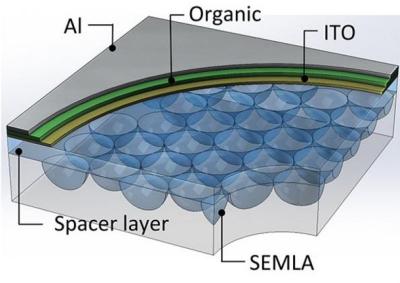Researchers develop efficient and bright polariton-based OLED devices
Researchers at the University of St Andrews and the University of Cologne developed a polariton-based OLED device that offers angle-independent narrowband emission.
Polariton-Exciton quasiparticles are created when an OLED material is inserted into a high-quality microcavity. The researchers explain that by sandwiching the OLED device between two "mirrors", strong coupling and hybridization of light and matter can occur. This leads to the creation of the polariton particles.









